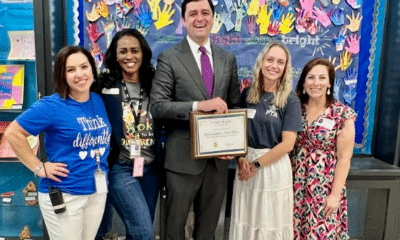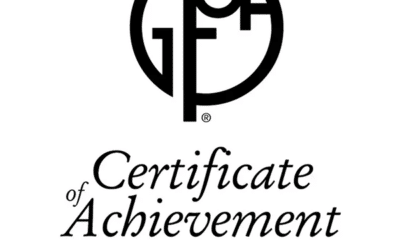Around Atlanta
High Museum of Art to present major Julie Mehretu Exhibition this fall
Published
5 years agoon
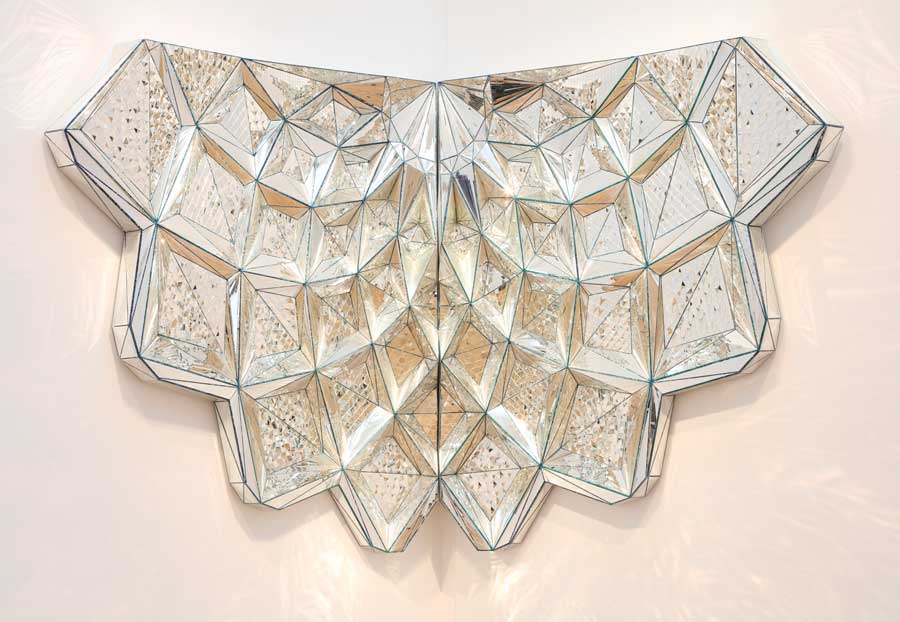
The first-ever comprehensive survey of Mehretu’s career covers two decades of the artist’s work and features many of her monumental paintings.
This fall, the High Museum will present “Julie Mehretu”(Oct. 24, 2020-Jan. 31, 2021), a major traveling exhibition of work by Julie Mehretu (born 1970, Addis Ababa, Ethiopia) co-organized by the Los Angeles County Museum of Art (LACMA) and the Whitney Museum of American Art. This is the first comprehensive survey of the artist’s career, covering more than two decades of her work, from 1996 to the present, and uniting nearly 40 drawings and prints and 35 paintings predominantly monumental in size and scale.
Mehretu’s work bears witness to the shaping of human consciousness through the combination and reconfiguration of sources and images that address history and its intersection with the present. Her process involves compiling a vast and diverse archive of sources, including diagrams and maps, cave markings, Chinese calligraphy, architectural renderings, graffiti, photojournalism and texts. The exhibition also reveals the centrality of drawing in Mehretu’s artistic practice, from her diminutive drawings made in the 1990s to her monumental paintings of the 2000s, and explores the abiding influences of indexing, diagramming, and mapping as well as their techniques, aesthetics, and ideologies.
Mehretu’s work of the past decade draws from present-day images of natural disasters, human rights atrocities and global conflicts. Her most recent work in the exhibition refers to the detention camps holding migrant children along the southern border of the United States and is often scaled to the size and reach of her body. This correspondence between the artist’s body and her distinctly physical application of paint (and erasure of objective imagery), in combination with fragmented images produced in drawing, printmaking and stenciling techniques, lend the recent work a palpable sense of urgency and poignancy.
A highlight of the exhibition is Mehretu’s cycle of four monumentally scaled paintings titled “Mogamma (A Painting in Four Parts)” (2012). Reunited for the first time since they were last shown together in 2013, “Mogamma” interrogates themes of migration, revolution, global capitalism and technology at the dawn of the Arab Spring. Each painting in the cycle belongs to four different museums across three continents. The High Museum of Art acquired “Mogamma (Part 2)” in 2013.
“We are grateful for the opportunity to present this sweeping examination of Mehretu’s dynamic, multi-faceted career,” said Rand Suffolk, Nancy and Holcombe T. Green, Jr., director of the High. “The globally conscience themes in her work align strongly with our commitment to celebrating diverse perspectives through the High’s collection and exhibition program. We look forward to offering our audiences a chance to experience a broad spectrum of her creative genius.”
“Julie Mehretu is one of the most consequential artists in the first quarter of this century,” said Michael Rooks, Wieland Family Curator of Modern and Contemporary Art, “. . . because she has managed to synthesize histories told and untold, and history in the making, with our present moment beset by dislocation and turmoil. Among the histories with which she contends is the history of visual culture, particularly the language of abstraction, which powerfully expresses the fragmentation, splintering, formation, and reformation of our present moment.”
“Julie Mehretu” considers the artist’s excavation of the histories of art, architecture, and past civilizations and addresses themes in her work such as migration, revolution, human rights, social justice, climate change and global capitalism. Additionally, the exhibition considers Mehretu’s career in printmaking through a selection of works produced with such techniques as etching, photogravure, aquatint and engraving. In its combination of media, the exhibition draws attention to the artist’s agility in radically shifting scale, moving from the intimate to the grand and from the personal to the universal. The exhibition will also include British artist Tacita Dean’s 2011 filmic portrait of Mehretu titled “GDGDA.”
Previously on view at LACMA (Nov. 3, 2019-Sept. 7, 2020), the exhibition will travel to the Whitney Museum of American Art (March 19-Aug. 8, 2021) and the Walker Art Center (Oct. 16, 2021-March 6, 2022) following its presentation at the High.
In early works such as “Untitled (two)” (1996), “Map Paint (white)” (1996) and “Untitled (yellow with ellipses)” (1998), Mehretu explores how to represent the cumulative effect of time by layering materials. In these paintings, she has embedded drawings between layers of poured paint, creating fossilized topographies.
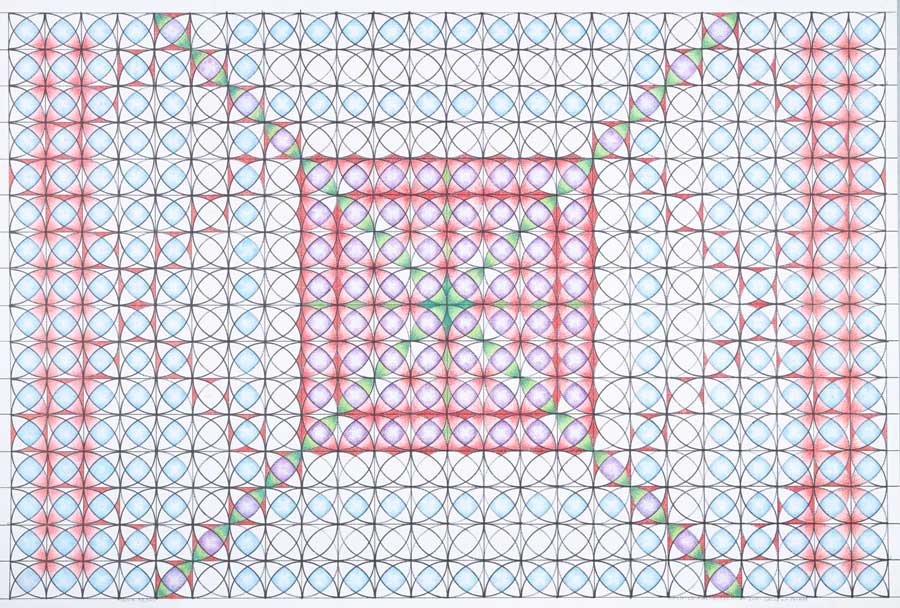
Squares), 2014, felt-tipped marker and colored pencil on paper. High Museum of Art,
gift of the estate of Monir Shahroudy Farmanfarmaian and Haines Gallery, San
Francisco, 2019. 173. © Monir Shahroudy Farmanfarmaian
In “Stadia II” (2004) and “Black City” (2007), Mehretu interrogates sports and military typologies to disrupt modern conceptions of leisure, labor and order. The coliseum, amphitheater and stadium in “Stadia II”represent spaces designed to accommodate and organize large numbers of people but that also contain an undercurrent of chaos and violence. While “Stadia II”is filled with curved lines and an array of pageantry such as flags, banners, lights and seating, “Black City” is more linear and contains references to the military and war, including general stars and Nazi bunkers. Both works call attention to the ways in which modern culture and the spectacle of contemporary wars, such as the War on Terror and the Iraq War, are connected to imperialism, patriarchy and power.
The four-part “Mogamma” (2012) took significant inspiration from the 2011 Egyptian revolution, part of the Arab Spring of uprisings in the Middle East and North Africa. The work was named after a government administrative building on Tahrir Square that was seen as a symbol of modernism and the country’s liberation from colonial occupation when it was first built in 1949. It was later associated with government corruption and bureaucracy before eventually serving as a revolutionary site. Mehretu began work on the four vertical canvases by exploring the densely layered environment of Tahrir Square, where an array of architectures — including structures built in Islamic, European and Cold War styles — coexist. She then created a web of drawings that combined the Brutalist architectural style of the Mogamma with details from other public squares associated with the revolutionary fervor of the Arab Spring, such as the amphitheater stairs and spiraling lights of Meskel Square in Addis Ababa, Ethiopia, and the midcentury high-rise buildings surrounding Zuccotti Park in New York. Over this, she layered drawings of global sites of public protest and change, such as Red Square in Moscow and Tiananmen Square in Beijing. “Mogamma” was installed in Documenta in 2012 and again in London in 2013. This exhibition reunites all four panels of the monumental painting and marks the first time the work has been shown in its entirety in the United States. Before traveling with the exhibition, “Part 2” had been on view at the High since the Museum acquired it in 2013.
Mehretu’s most recent paintings introduce bold gestural marks and employ a dynamic range of techniques such as airbrushing and screenprinting. The works draw on her archive of images of global horrors, crises, protests and abuses of power, which she digitally blurs, crops and rescales. She uses this source material as the foundation for her paintings, overlaying the images with calligraphic strokes and loose drawings. For example, “Conjured Parts (eye), Ferguson” (2016) links disembodied anatomy with a site of violence and political strife. The painting began with a blurred photograph of an unarmed man with his hands up facing a group of police officers in riot gear, which was taken during the protests following the fatal shooting of Michael Brown in Ferguson, Missouri. Mehretu layered color over a blurry, sanded black-and-gray background; fuchsia and peachy-pink areas rise from below while toxic green tones float above like distant skies drawing near. Outlines of eyes, buttocks and other body parts appear within the graffiti-like marks and black blots hovering over smoky areas, suggesting human activity obscured.
In “Hineni (E. 3:4)” (2018), Mehretu addresses the fires caused by climate change and the intentional burning of Rohingya homes in Myanmar as part of a campaign of ethnic cleansing. The painting is based on an image from the 2017 Northern California wildfires, while the word “hineni” in the title translates to “here I am” in Hebrew, which was the biblical prophet Moses’s response to Yahweh (God), who called his name from within the burning bush. By interrogating three types of fires in this painting — one environmental, one intentional and one prophetic — Mehretu explores the contradictory meanings of a single elemental force.
Installed alongside these recent paintings, “Epigraph, Damascus” (2016) is a notable achievement in printmaking for Mehretu, representing a new integration of architectural drawings and painting overlaid with an unprecedented array of marks. Working closely with master printer Niels Borch Jensen, Mehretu used photogravure, a 19th-century technique that fuses photography with etching. She built the foundation of the print on a blurred photograph layered with hand-drawn images of buildings in Damascus, Syria, then composited that with a layer of gestural marks made on large sheets of Mylar. On a second plate, she executed her characteristic variety of light-handed brushstrokes, innovatively using techniques known as aquatint and open bite.
Many of Mehretu’s large-scale works will be on view throughout the galleries. The artist is known to create large horizontal canvases full of layered drawings to work out complexities of scale, size, detail and expanse. These panoramas often take on monolithic or compressed themes and histories such as African liberation movements and the architecture of spectacle.
The exhibition will also feature“Transcending: The New International” (2003). The painting began with a map of Ethiopia’s capital city, Addis Ababa, which Mehretu fused with maps of every African economic and political capital, creating a vast network of aerial views of the continent. In subsequent layers, she included drawings of both colonialist architecture in Africa and iconic modernist buildings erected there during and after liberation. In the center of the painting, she layered drawings of the many African plazas of independence with idiosyncratic markings she has called “characters.” Here, these characters stage battles, migrate, form alliances, congregate and ultimately participate in a system of entropy.
“Julie Mehretu” will be on view in the Cousins Special Exhibition Galleries on the Second Level of the High’s Wieland Pavilion.
About Julie Mehretu
Mehretu (born 1970, Addis Ababa, Ethiopia) immigrated with her family to the United States in 1977 and was raised in Michigan. She received a bachelor’s degree in art from Kalamazoo College, Michigan; studied at Université Cheikh Anta Diop, Dakar, Senegal; and received a Master of Fine Arts degree from the Rhode Island School of Design in 1997.
In 2017, Mehretu unveiled a major new commission of two vastly large site-specific paintings at the San Francisco Museum of Modern Art, California. Her work has been shown in other recent exhibitions at Venice Biennale, Venice, Italy (2019); Kettle’s Yard at the University of Cambridge, United Kingdom (2019); Fundacion Botín, Santander, Spain (2018); Serralves Museum of Contemporary Art, Porto, Portugal (2017); the Modern Art Museu, Addis Ababa, Ethiopia (2016); the Guggenheim Museum, New York (2010); and a major traveling show that began at MUSAC (Museo de Arte Contemporáneo de Castilla y León), Spain, in 2006 and traveled to the Kunstverein Hannover, Germany, and the Louisiana Museum of Modern Art, Humlebaek, Denmark, in 2007.
Her group exhibitions include Busan Biennial (2002); Istanbul Biennial (2003); Whitney Biennial (2004); São Paulo Biennial (2004); Carnegie International (2004-5); Sydney Biennial (2006); Prospect New Orleans (2008-9); The Studio Museum in Harlem, New York (2011); Documenta (2012); National Gallery of Art, Washington, D.C. (2013); Dak’Art (2014); Biennial of Contemporary Art of Cartagena de Indias (2014); Museum of Modern Art, New York (2014); Sharjah Biennial (2015); and Venice Biennale (2019).
Mehretu is a recipient of many awards, including The MacArthur Award (2005) and the U.S. Department of State Medal of Arts Award (2015). She is a member of the American Academy of Arts and Letters and is represented by Marian Goodman Gallery in New York, where she lives and works.
Exhibition Catalogue
The exhibition is accompanied by a 320-page retrospective monograph of Mehretu’s work, featuring 455 color illustrations, that traces the development of one of America’s most celebrated abstract painters. Edited and featuring essays by exhibition curators Christine Y. Kim, Curator, Contemporary Art at LACMA, and Rujeko Hockley, Assistant Curator, Contemporary Art at Whitney Museum of American Art, the book includes numerous contributions by leading scholars and writers including Andrianna Campbell-LaFleur, Adrienne Edwards, Thelma Golden, Mathew Hale, Leslie Jones, Fred Moten and Dagmawi Woubshet.
Exhibition Organization and Support
This exhibition is organized by the Los Angeles County Museum of Art and the Whitney Museum of American Art, New York. This exhibition is made possible by Premier Exhibition Series Sponsors Delta Air Lines, Inc. and Invesco QQQ; Exhibition Series Sponsor Northside Hospital; Premier Exhibition Series Supporters the Antinori Foundation, Sarah and Jim Kennedy, Louise Sams and Jerome Grilhot, and wish Foundation; Benefactor Exhibition Series Supporters Anne Cox Chambers Foundation and Robin and Hilton Howell; Ambassador Exhibition Series Supporter Rod and Kelly Westmoreland; and Contributing Exhibition Series Supporters Lucinda W. Bunnen, Marcia and John Donnell, W. Daniel Ebersole and Sarah Eby-Ebersole, Peggy Foreman, Mr. and Mrs. Baxter Jones, Margot and Danny McCaul, Joel Knox and Joan Marmo, and The Ron and Lisa Brill Family Charitable Trust. Generous support is also provided by the Alfred and Adele Davis Exhibition Endowment Fund, Anne Cox Chambers Exhibition Fund, Barbara Stewart Exhibition Fund, Dorothy Smith Hopkins Exhibition Endowment Fund, Eleanor McDonald Storza Exhibition Endowment Fund, The Fay and Barrett Howell Exhibition Fund, Forward Arts Foundation Exhibition Endowment Fund, Helen S. Lanier Endowment Fund, Isobel Anne Fraser–Nancy Fraser Parker Exhibition Endowment Fund, John H. and Wilhelmina D. Harland Exhibition Endowment Fund, Katherine Murphy Riley Special Exhibition Endowment Fund, Margaretta Taylor Exhibition Fund, and the RJR Nabisco Exhibition Endowment Fund.
Related
Around Atlanta
Mike Schleifer to Leave Alliance for Lincoln Center Theater
Published
2 months agoon
March 26, 2025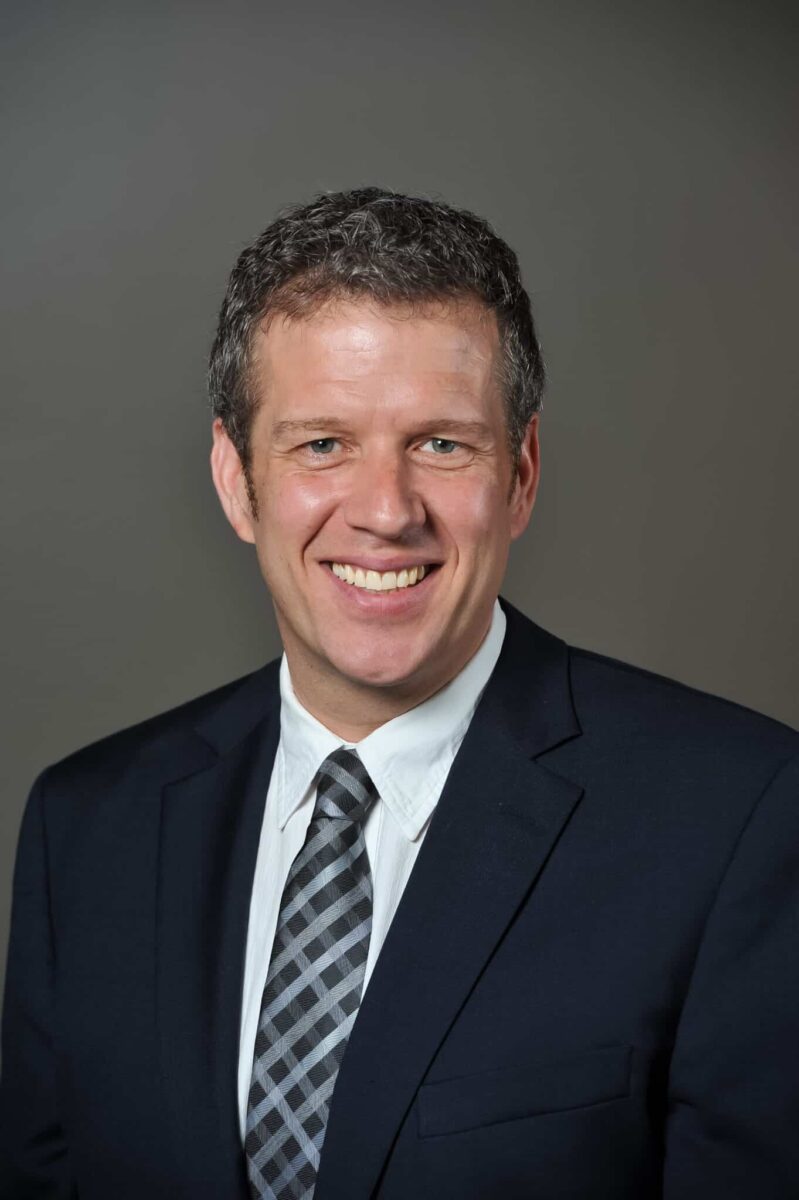
After leading Atlanta’s Alliance Theatre through two major renovation projects, a global pandemic and more than 100 productions over 11 years, Managing Director, Mike Schleifer, will leave the Alliance at the end of the year to become the managing director of Lincoln Center Theater in New York.
As managing director of the Alliance, Schleifer oversees all operational, marketing, financial, fundraising and shared services activities. In his new role, Schleifer will oversee LCT’s financial and operational health and ensure long-term sustainability and growth. He will also work to align strategic planning with artistic goals, manage the theater’s union relationships, lead budgeting, marketing and capital planning efforts and identify and develop new revenue opportunities.
“While it’s rare to find a managing director who is equally brilliant at the operational and financial part of the job, it’s simply unheard of to find one who excels on those fronts and leads with such unabashed heart, vision and humor,” said Jennings Hertz Artistic Directors Tinashe Kajese-Bolden and Christopher Moses in a joint statement.
“For the past 11 years, we had the unfathomably good fortune to have all that and more in Mike Schleifer. Mike’s willingness to bet on our mission and invest in the extraordinary talent of the Alliance staff allowed us to realize aspirational dreams we never would have dared to dream without his encouragement and faith. We’ll miss him daily but cannot wait to witness the joy he’ll bring to the Lincoln Center Theater.”
During his tenure
During his tenure with the Alliance, Schleifer led the administrative and producing teams on over 100 productions and moved four shows to Broadway, including last season’s “Water for Elephants” and this season’s “Maybe Happy Ending.”
He spearheaded the $36 million renovation of the award-winning Coca-Cola Stage and is currently leading the $26 million renovation of the Goizueta Stage for Youth and Families. Under his leadership, the Alliance more than doubled its operating budget, tripled its endowment and continued to lead the country in work developed for young audiences.
“It’s been a true honor and privilege to work, lead and learn at the Alliance Theatre for the last eleven years,” said Schleifer. “I’m deeply grateful to the staff, artists and audiences of the Alliance Theatre and Woodruff Arts Center who have made this journey so rewarding.”
“We’ve achieved remarkable milestones — from moving productions to Broadway to completing transformative capital projects,” he continued. “I’m excited for what’s next, but I won’t be leaving until we cut the ribbon on the new Goizueta Stage for Youth and Families — a project that reflects the Alliance’s deep commitment to the next generation of theatergoers, both with the physical theater space and with the endowment we’re raising to make the work on that stage financially accessible for all.”
Additional roles
In addition to his work at the Alliance, Schleifer serves on the boards of the League of Resident Theatres and True Colors Theatre Company. In 2018 he co-founded Volute Partners, a theatre consultancy focused on capital projects and the subsequent operational support and budgets needed to sustain them.
“We are immensely grateful for Mike’s leadership and tireless dedication to the Alliance Theatre. His vision, passion, and expertise have left an indelible mark on this organization,” said Hala Moddelmog, president and CEO of Woodruff Arts Center.
“We take great pride in seeing him step into this well-deserved opportunity, knowing he will make a lasting impact at Lincoln Center Theater.”
New leadership
The leadership of the Woodruff Arts Center, with support from members of the Alliance Theatre Board of Directors, will conduct a national search for the Alliance’s next managing director, led by executive search firm, Corps Team.
“On behalf of the Alliance’s board of directors, we want to thank Mike for more than a decade of service to the Alliance and Atlanta community,” said Kendrick Smith, Alliance Theatre Board of Directors chair. “He oversaw a period of unprecedented growth with a spirit of collaboration and unwavering commitment to the theater’s artistic vision.”
“As we begin the national search for his successor, we remain dedicated to the theater’s mission of expanding hearts and minds, on stage and off.”
About the Alliance Theatre
Founded in 1968, Alliance Theatre is the leading producing theater in the Southeast, reaching more than 165,000 patrons annually.
The Alliance is led by Jennings Hertz Artistic Directors Tinashe Kajese-Bolden and Christopher Moses and Managing Director Mike Schleifer and is a recipient of the Regional Theatre Tony Award® for sustained excellence in programming, education and community engagement.
In January 2019, the Alliance opened its new, state-of-the-art performance space, The Coca-Cola Stage at Alliance Theatre.
Known for its high artistic standards and national role in creating significant theatrical works, the Alliance has premiered more than 140 productions, including eleven that have transferred to Broadway.
Additionally, the Alliance education department reaches more than 90,000 students annually through performances, classes, camps and in-school initiatives designed to support teachers and enhance student learning.
The Alliance Theatre values community, curiosity, collaboration and excellence and is dedicated to representing Atlanta’s diverse community with the stories they tell, the artists, staff and leadership they employ and the audiences they serve.
For more information, visit alliancetheatre.org.
Related
Around Atlanta
Fantastical Creatures in Fernbank’s WildWoods
Published
2 months agoon
March 5, 2025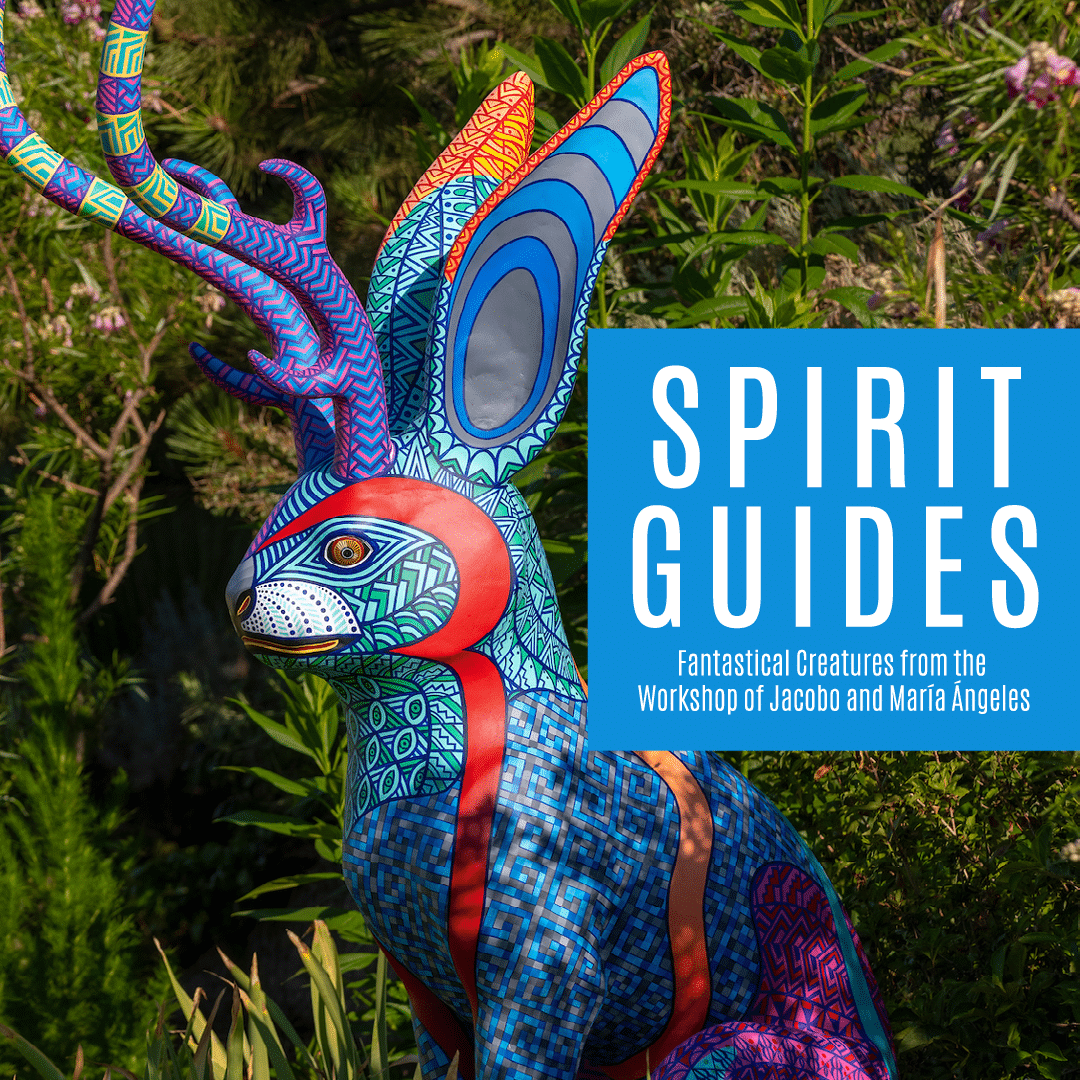
Encounter mythical creatures in a natural landscape when “Spirit Guides: Fantastical Creatures from the Workshop of Jacobo and María Ángeles” opens March 29.
Immerse yourself in a breathtaking outdoor exhibit that intertwines Mexican cultures and contemporary art when “Spirit Guides: Fantastical Creatures from the Workshop of Jacobo and María Ángeles” opens at Fernbank Museum.
From March 29 to August 3, guests can enter a supernatural world as they walk alongside towering, brightly colored and richly patterned sculptures in the natural landscape of Fernbank’s WildWoods.
Presented in both English and Spanish, this collection of brightly-colored fiberglass sculptures depicts imaginary hybrid animals and offers visitors an unparalleled journey into an imaginative take on the spiritual landscape of southern Mexico’s Indigenous traditions.
Inspiration and legend
In creating “Spirit Guides,” artists Jacobo and María Ángeles were inspired by an ancient Zapotec stone calendar. Indigenous to southern Mexico, Zapotec culture is deeply connected to plants, seasons and animals.
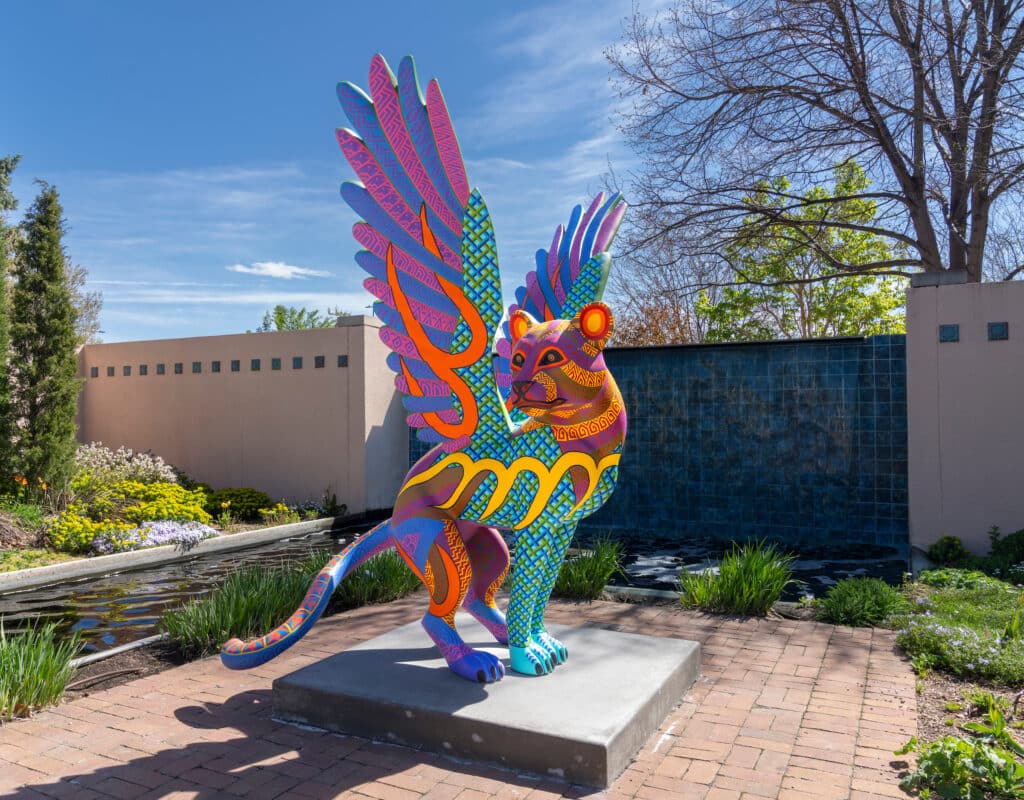
“Spirit Guides” beckons visitors to travel into the spiritual landscape of Mexico’s Indigenous traditions through these animal sculptures that act as both spirit guides and astrological embodiments of human character.
Some of the hybrid animals depicted include a combination of a deer-butterfly or a coyote-fish. These larger-than-life sculptures depict patterns and designs that symbolize different aspects of Zapotec life and culture, such as happiness, fertility and community.
The artists have previously stated that, according to a Zapotec legend, when you are born an animal comes to you to serve as your protector in this world. This animal is your tona, a being that shares your destiny and soul.
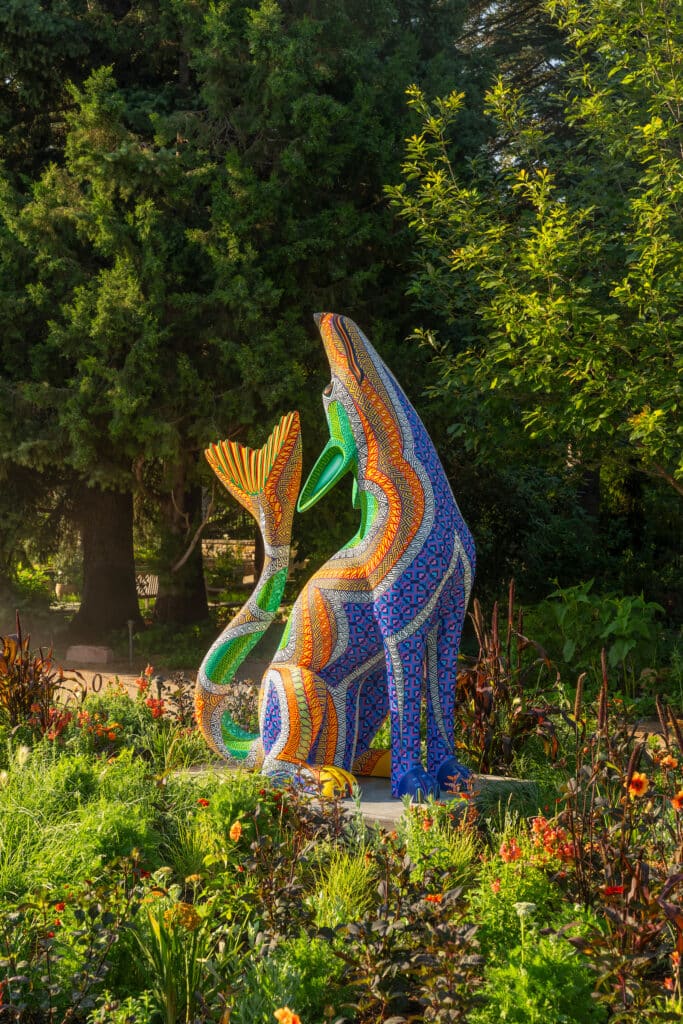
Along with your tona, you also have a nahual, which is assigned based on the year of your birth. This spirit animal embodies characteristics that mirror your own personality.
As guests stand before the sculptures in WildWoods — some of which stand nearly 8 feet tall and 9 feet wide — they are made conscious of the profound connection between the natural and cosmological worlds.
About the Artists
Jacobo and María Ángeles are a married artist team based in Oaxaca, Mexico.
Joyful, fanciful and distinctively patterned, the Ángeles’ animal sculptures embrace both contemporary art and folk-art traditions. They employ and teach more than 100 artisans in their workshop, which has created artworks shown in museums around the world.
Exhibit details
By drawing inspiration from the Zapotec calendar and their own imaginations, the Ángeles team sculpted their own mythical creations.
This exhibit features eight towering, vibrant fiberglass sculptures of hybrid animals, intersecting art, mythology and identity. The sculptures were designed through a multi-step process that included conceptual sketches, small wooden renderings and papier mâché molds before casting the fiberglass.
A team of artisans then helped to paint the sculptures with striking colors and intricate geometric patterns inspired by Zapotec and other Indigenous designs, each with their own unique meaning.
Organized by Denver Botanic Gardens, “Spirit Guides: Fantastical Creatures from the Workshop of Jacobo and María Ángeles” is on view from March 29 – August 3, 2025. The exhibit is included with General Admission at Fernbank Museum and is free with CityPASS.
It will also be on view select nights when the museum is open, including during Fernbank After Dark and Fernbank … but Later.
For more information, please visit fernbankmuseum.org.
Related
Around Atlanta
Fernbank Museum Roars with Excitement for New Exhibit
Published
4 months agoon
January 21, 2025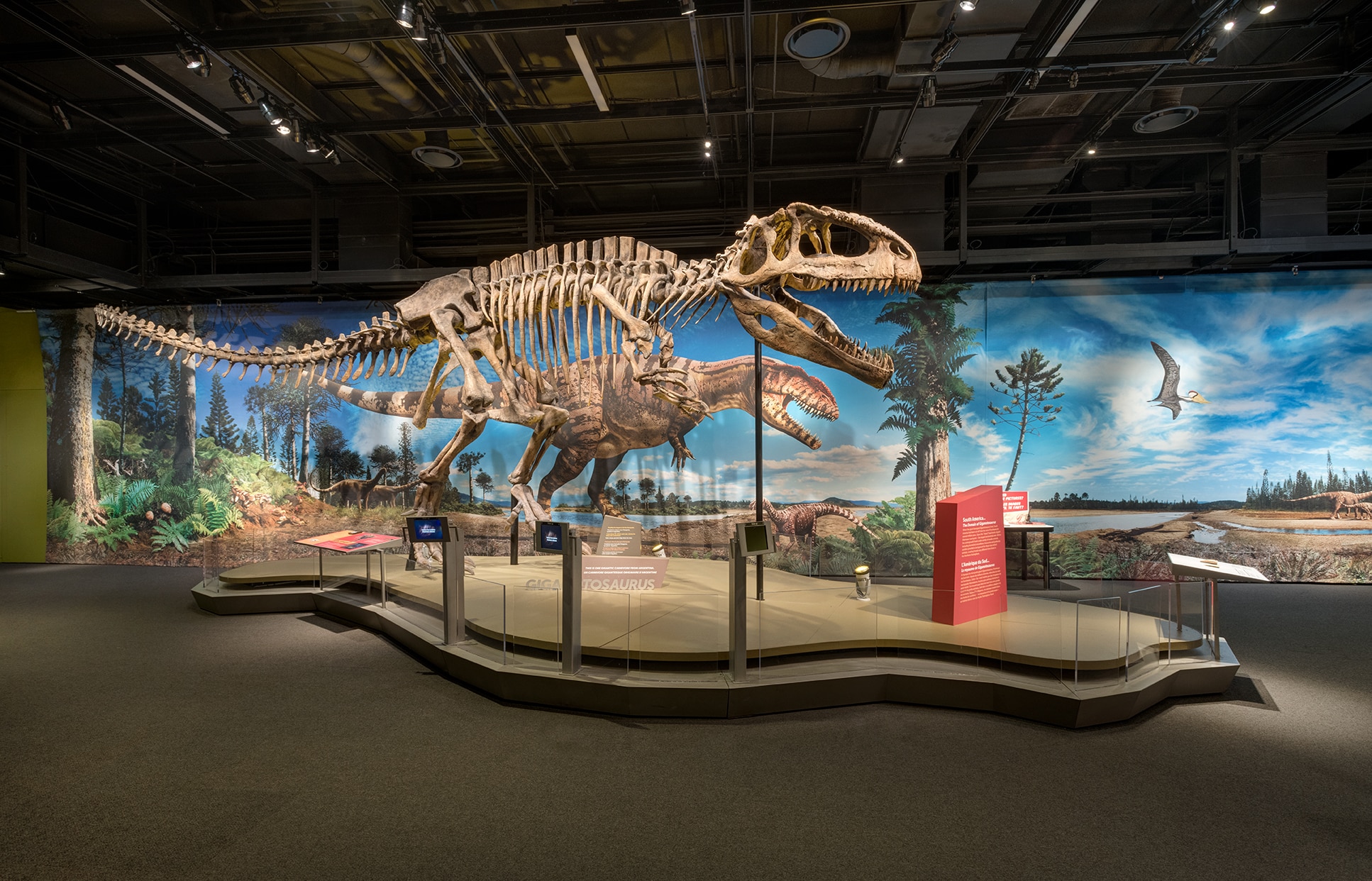
“Ultimate Dinosaurs” will run from February 8–May 4, 2025
“Ultimate Dinosaurs,” a special exhibit that explores the fascinating species that evolved in isolation in South America, Africa and Madagascar, stomps into Fernbank Museum from February 8 to May 4.
Through the exhibit, guests will experience an impressive blend of skeletal displays and augmented reality as they learn about the changing prehistoric landscape of dinosaurs in a new, modernized way.
Journey through the Mesozoic
Based on groundbreaking research from scientists around the world, “Ultimate Dinosaurs” highlights dinosaurs typically unfamiliar to North Americans and seeks to answer the question: why are the unique and bizarre dinosaurs in the Southern Hemisphere so different from their North American counterparts?
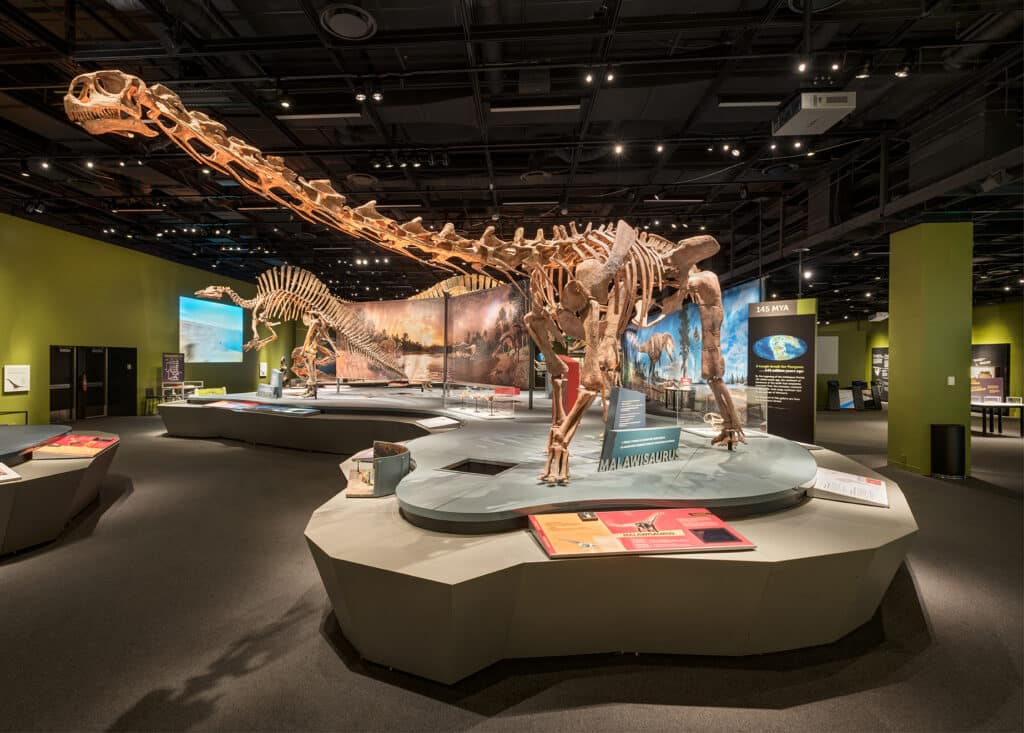
Starting with the breakup of the supercontinent Pangaea, “Ultimate Dinosaurs” takes visitors on a journey through the Mesozoic Era (250-65 million years ago) and shows how continental drift affected the evolution of dinosaurs during the Triassic, Jurassic and Cretaceous periods.
“We are excited to have “Ultimate Dinosaurs” here at Fernbank and explore the unique ways that dinosaurs have evolved in isolation,” said program manager, Maria Moreno. “This exhibit combines rarely seen specimens with interactive stations for patrons of all ages to enjoy.”
“It is also very exciting to have an exhibit highlighting our mascot, the Giganotosaurus, one of the largest land predators to have ever lived,” Moreno added.
Dino displays and hands-on activities
Guests can view a variety of full-scale dinosaur displays from the Eoraptor, Malawisaurus, Suchomimus, Rapetosaurus and more, including 14 dinosaur skeletons. One highlight is the Giganotosaurus skeleton, which is also on view in Fernbank’s permanent exhibit, “Giants of the Mesozoic.”
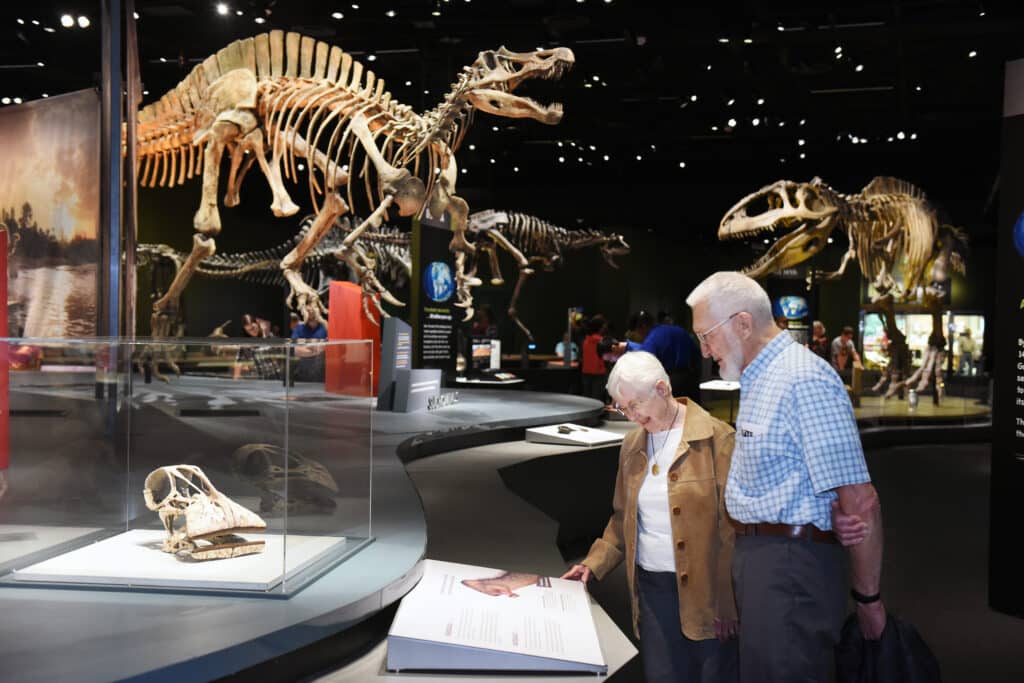
This special exhibit will include several real fossils, some of which will be available to visitors to touch. Additionally, “Ultimate Dinosaurs” features several hands-on activities, one of which involves exploring the physical characteristics of dinosaurs’ stride patterns, crests and frills.
Another activity uses augmented reality to transform intricately detailed skeletons into moving, flesh-and-bone creatures.
Related programming
To celebrate the grand opening of “Ultimate Dinosaurs,” Fernbank is hosting a family-friendly Dino Day on Saturday, February 8 from 10 a.m. to 1 p.m. The event is included with general admission.
Additionally, the giant screen film, “T. REX 3D,” will be showing through May 16.
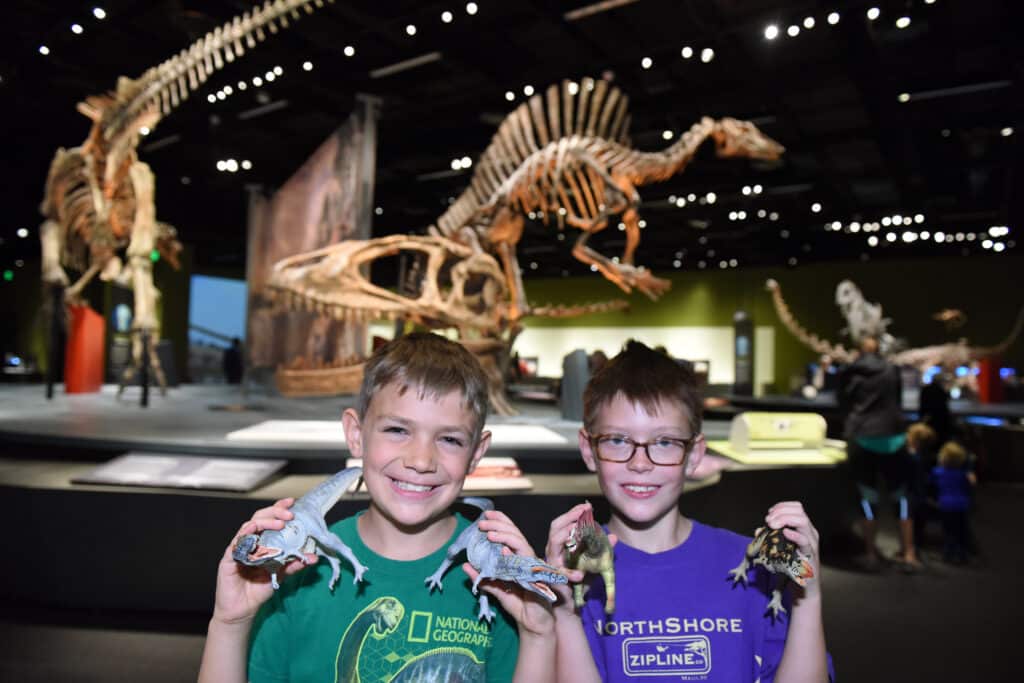
There will also be a lecture with Anthony (Tony) Martin, professor of practice in the Department of Environmental Sciences at Emory University, titled “On Frozen Ground Down Under: Polar Dinosaurs, Insects and other Cretaceous Fossils of Australia” this spring.
The details
Presented by the Science Museum of Minnesota, “Ultimate Dinosaurs” is open at Fernbank from February 8–May 4. The exhibit will be included with general admission tickets and is free with CityPASS.
For more information or to purchase tickets, visit fernbankmuseum.org.
Related
Read the Digital Edition
Subscribe
Keep Up With Peachtree Corners News
Join our mailing list to receive the latest news and updates from our team.
You have Successfully Subscribed!

Katherine Lafourcade — A Journey of Passion, Resilience and Giving Back

Digital Edition

PCBA Announces 2025 Scholarship Winner

Official City Merchandise Line Debuts This Saturday at Town Green

Paul Duke STEM High School Student Earns CGO Scholarship

World Blood Donor Day Starts Here: Theo’s Miracle, Katherine’s Mission [Podcast]

Executive Function: A Tribute to Working Moms

Peachtree Corners Grows Business Opportunities Through Economic Development

City of Peachtree Corners Awarded Certificate of Achievement From GFOA for Seventh Straight Year

Simpson Elementary Marks Exceptional Children’s Week

Executive Function: A Tribute to Working Moms

Official City Merchandise Line Debuts This Saturday at Town Green

Peachtree Corners Grows Business Opportunities Through Economic Development

Digital Edition

World Blood Donor Day Starts Here: Theo’s Miracle, Katherine’s Mission [Podcast]

Paul Duke STEM High School Student Earns CGO Scholarship

Light up the Corners [Video]

Capitalist Sage: Business Leadership in Your Community [Podcast]

Cliff Bramble: A Culinary Adventure through Italy

Top 10 Brunch Places in Gwinnett County

A Hunger for Hospitality

THE CORNERS EPISODE 3 – BLAXICAN PART 1

Top 10 Indoor Things To Do This Winter

The ED Hour: What it takes to Remove Barriers from Education

Peachtree Corners Life
Topics and Categories
Trending
-
City of Peachtree Corners5 days ago
Official City Merchandise Line Debuts This Saturday at Town Green
-
Community5 days ago
Executive Function: A Tribute to Working Moms
-
Community4 days ago
Simpson Elementary Marks Exceptional Children’s Week
-
City Government2 days ago
City of Peachtree Corners Awarded Certificate of Achievement From GFOA for Seventh Straight Year







